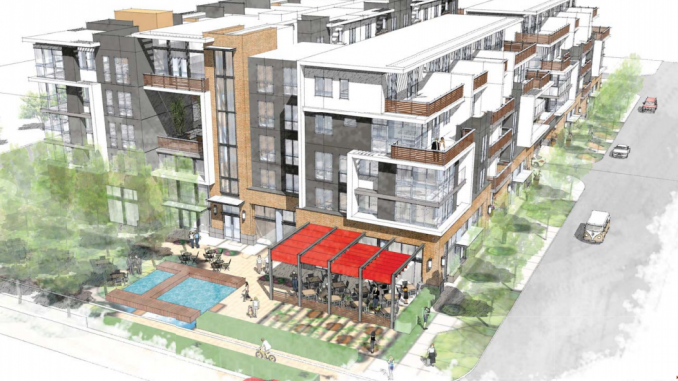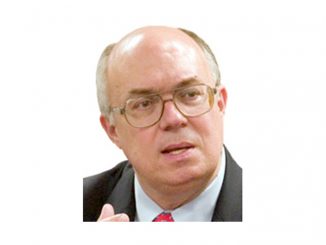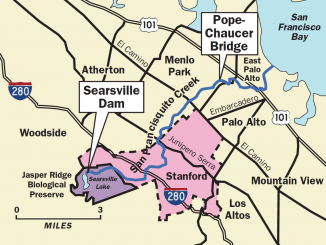
BY EMILY MIBACH
Daily Post Staff Writer
Stanford is offering to give $6 million for schools and a bicycle and pedestrian bridge over the train tracks in Menlo Park in exchange for a mixed-use project, but two City Council members don’t think it’s enough.
On Tuesday the council will review a draft development agreement for the sprawling 8.4-acre project at 500 El Camino Real, which would extend from Stanford Park Hotel to Big Five, across from Safeway. The five-building project would have 215 apartments, 10,000 square feet of retail and 143,000 square feet of office space.
Councilmen Ray Mueller and Peter Ohtaki, who were part of the negotiating team for the city, said they will not recommend the deal unless Stanford increases the amount it will give to the Menlo Park-Atherton Education Foundation to $1.5 million over 15 years, instead of the currently proposed $1 million over 10 years. The foundation is a nonprofit that raises money for the Menlo Park City School District.
Mueller said he wants more money for the education fund partly to make up for the loss of property tax revenue the school district would normally get.
Stanford also has said university employees will get priority for the 215 apartments — and that limits how much residential property tax revenue the school district and the city will get. Stanford will apply for a tax exemption if someone related to the university is living in an apartment, according to Communication Director Jean McCown. However, taxes will still apply to the retail and office space in the development.
McCown said the yearly contributions from Stanford are not necessarily tied to the district’s property tax concern. Rather, the contributions are “expressing our interest in being a supportive community member to the schools.”
But McCown said that Stanford is willing to hear the arguments for more money for schools. Also, in a letter to the council, Development Managing Director Steve Elliott said Stanford already has commercial properties that generate $400,000 in taxes for the district.
The school district has estimated it will get about 39 more students from the Stanford project — totaling about $660,000 a year in additional costs, Superintendent Erik Burmeister said in a letter to city officials. Between the $500,000 the district will get in contributions and taxes from Stanford, it still does not balance out the district’s new costs.
Low-income housing
Mueller and Ohtaki also want the council to consider setting aside five of the 10 low-income apartments that are a part of Stanford’s project for district teachers. This is not part of the draft development agreement because ultimately the city will decide who gets to live in the low-income units.
Stanford will pay up to half the cost of a bicycle and pedestrian crossing over the railroad tracks near the property up to $5 million. Originally, Stanford was offering $3 million to the city before the amount was increased during negotiations, according to Elliott.
Former Planning Commissioner Patti Fry said the “funding” for the crossing and schools are “a start, but inadequate.”
“The school system and city services have to be paid into the long term so those payments should not stop in 10 years but go at least the life of the buildings (e.g., 55 years),” Fry wrote in an email to the Post.
Plaza
The agreement also includes language stating that a plaza near the retail portion of the project will be open to the public from 6 a.m. to midnight. Mueller said it was a difficult agreement to negotiate because Stanford can “go out today and rent homes
or apartments in Menlo Park, so we were somewhat limited in how hard to push.”
Mueller also pointed out that road improvements are listed in the project’s environmental impact report, such as work on Middle Road. The report will be reviewed by the city’s Planning Commission on Monday. If the EIR is approved by the commission Monday and the development agreement is OK’d by the council Tuesday, the project might be up for final
approval next month, McCown said.



